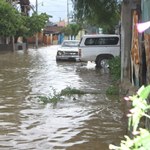Peru is unable to implement
Published on Fri, 2019-03-15 12:10
Peru was affected by natural disasters more than a year ago, when heavy rains and floods affected 21 of its 25 departments. As of May 2018, thousands of families still lived in tents and many schools and hospitals had not recovered completely. In fact, many families still have not recovered their houses, destroyed by an earthquake in 2007, more than ten years ago! Peru is part of the “Ring of Fire” around the Pacific Ocean, prone to earthquakes and volcanic activity. It is further vulnerable to the climate change-induced alterations in ocean currents, causing floods in the north of the country and drought in the south and centre. According to the report by Grupo Red de Economia Solidaria del Perú (GRESP) and the Intercontinental network for the promotion of social solidarity economy (Ripess) “lack of planning in the use of land for housing and criminal-led occupations of unsuitable terrain to set up slums make the problem worse. Captured by corruption, the Peruvian state is too weak to implement public policies, risk prevention, emergency assistance or rehabilitation and reconstruction.” In 1990, when neoliberal policies started to be implemented, poverty affected 24 percent of the population. The 2018 household survey situates income poverty at 21.7 percent. “Peru has sold at throw-away prices its state-owned enterprises and given away all its natural resources to lower poverty to less than three percent” comments NGO leader Héctor Béjar. “The 2030 Agenda, from this perspective, looks like a beautiful but unreachable utopia.” Source: Peru National Report 2018 (in Spanish). » |
SUSCRIBE TO OUR NEWSLETTER



